Birth
Sankara
is born on an uneventful day in September of the year 1449. His father,
Kusumavara, is over-joyed; for, he had gone across the mighty river
Brahmaputra to Singari and prayed before Lord Shiva, seeking a
son. There is also quiet satisfaction for the Satyasandha,
Sankara�s mother. Finding her without child after several years of
marriage, Kusumavara had taken a second wife. By a turn of fate, it
is Satyasandha who now bore him his first child, a son much
coveted.
That night, there are great festivities in the household of
the Siromoni Bhuya in Alipukhuri, a small village near
Bardowa in Nowgong district in central
Assam. No one in
attendance would sense that the history of the period
would one day describe the Bhuyas as �petty chiefs�.
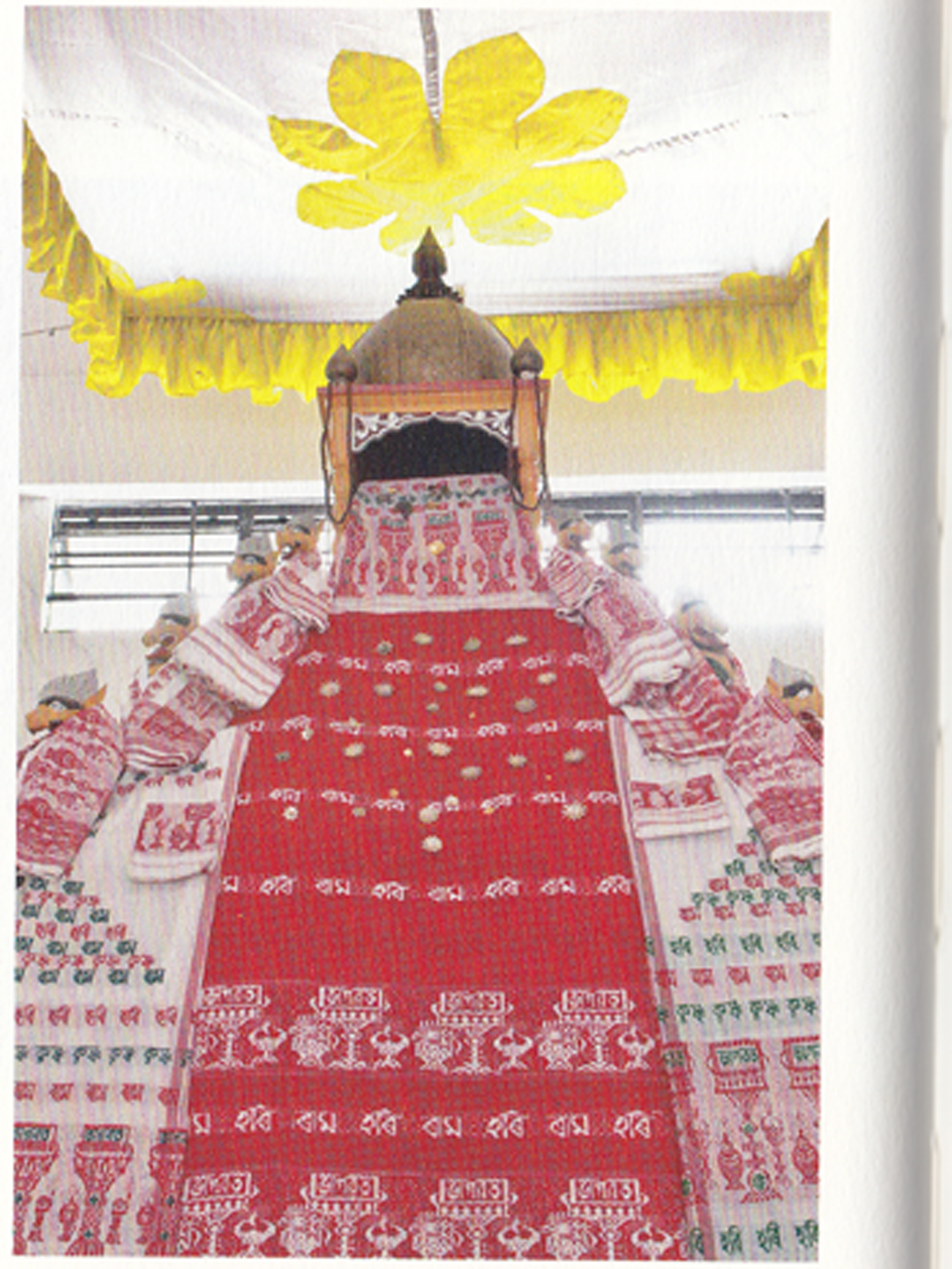
Ancestors
Sankara�s
ancestors entered Assam around 1350 through the western route, as
emissaries from Dharmanarayana of Gaur to the Kamata king
Durlabhanarayana. Durlabhanarayana settled them with land and
men, and the title Bhuya. Bhuya, also Bhuiya or
Bhuiyan, was merely the Sanskrit equivalent of the Persian word
�Zamindar�, meaning landlord, and had nothing to do
with caste. Each Bhuya was independent of the others within his own
domain, but they joined forces when threatened by a common enemy.
Chandivara, the ablest among them, was made their leader. A man of
enterprise, he was as well versed in the scriptures as in the art of
warfare. He earned the goodwill of the Kamata king when he
outsmarted a scholar from Nadia,
Bengal, in a debate in
the royal court.
Chandivara
and few other Bhuyas later moved east and finally settled at
Bardowa in Central Assam, ruling individual principalities or tracts
of land. Being their leader, Chandivara held the title �Siromoni
Bhuya�, meaning overload or holding supremacy over many Bhuyas.
The tradition of learning continued through the generations. Sankara�s
father, Chandivara�s great-grandson Kusumavara, would come
to be known in his time as a scholar of some repute. When Sankara
lost his parents while very young, his grandmother would see to it that
the boy followed the tradition of his forefathers.
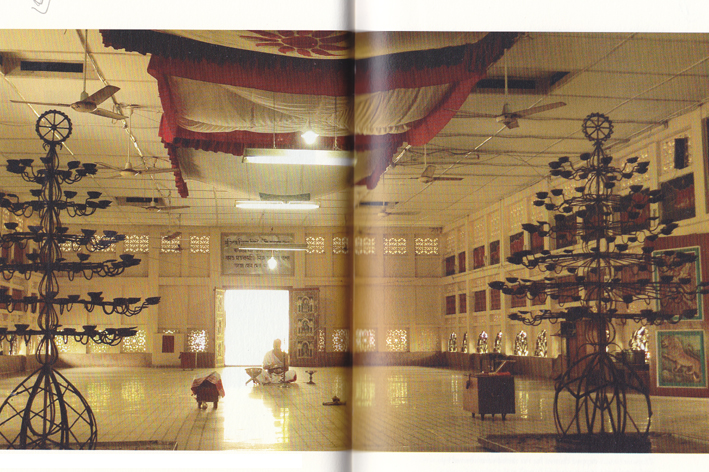
Assam on Its Own
The only routes between
India and the rest of
the world, practicable for mass migration, lie to its northwest
and northeast confines-hemmed in as it is by a sea to its
south, and the lofty
Himalayas to its north. Over the centuries, invaders such as the
Greeks, the Huns, the Pathans and the Mughals entered
through the northwestern route. Via the northeast came successive hordes
of invaders from
Burma and Western
China. By the thirteenth century, northeastern India including Assam
became a conglomeration of tribes of Mongolian
origin, and the border was virtually sealed.
As the Buddhist scholar Richard Salomon points out,
Assam�s historical
tradition-like that of
India�s
neighbors Bhutan, Tibet and Sri Lanka- predates that of the rest of India
by a good few centuries. This is because the Ahoms of the Tai
or Shan race, who invaded Assam in 1228 and ruled uninterrupted for
nearly 600 years, brought with them a keen sense of history. Their
buranjis, or historical chronicles, give a full and detailed account
of their rule since its inception. In the Ahom language, bu
is an �ignorant person�, ran is �to teach� and ji is
�granary�; thus buranji means �a store that teaches the ignorant�.
Bansabalis
or family histories, maintained by other kings and nobles of the period in
Assam, also provide some detail of contemporaneous events. Unfortunately,
these histories remained inclusive and sometimes in private preserve. The
19th century historian Edward Gait would employ an Assamese
youth to delve into these chronicles for the purposes of his research.Elsewhere in India, the tradition took hold after the arrival of the
Mughals in 1526.
For events of earlier dates, historians painstakingly
pieced together information gathered from old inscriptions, accounts of
foreign invaders or travelers, and incidental references in religious
writings.
Assam is geographically
so situated that interaction with the rest of the country was possible
only through its western border. Land communication at the time was not
easy, while river navigation prospered after the British took over in the
early nineteenth century. The Assamese perceived a need for protection of
their western border from foreign invaders, and set about ensuring
it, inadvertently bringing on a certain degree of insularity.
As with traditional scribes across civilizations,
transcription and record keeping in
Assam were largely
confined to the courts. And so, despite the presence of chronicles, there
are few contemporary accounts of ex-regal events in the time of
Sankaradeva. Of his four generally accepted biographies, the earliest
is by one who was a mere child when Sankaradeva passed away in
1568; the others written in early to mid 17th century, long
after his death, are not always of the highest reliability.
Furthermore, the biographies tend towards hagiography,
bringing in the pan-Indian tradition of myths and miracles that glorify
saints. This makes any account of the saint�s life controversial
especially where dates are concerned. What is of relevance, however, is
the body of his work that clearly brings out the substance of it.
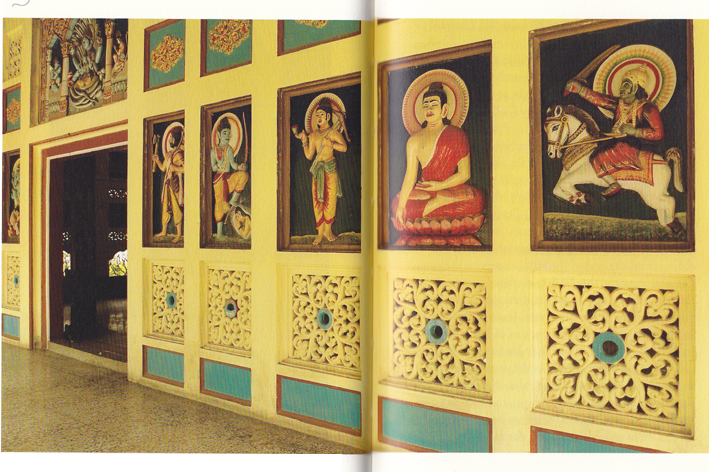
His Times
In mid-15th century, the northeastern states are
ruled by a multitude of heterogeneous entities. The Koch and the Kamata
kingdoms are in the west, the Jaintias to the south, the
Chutiyas to the east mainly on the northern bank of the river
Brahmaputra,
and the Kacharis and the Ahoms to the east on its southern
bank. In between, a few Bodo tribes enjoy a precarious existence as
do a number of Bhuyas. Clearly, the once powerful Bhuyas,
Sankara�s ancestors, who had arrived in the 1350, are on the decline.
The Ahoms, who entered
Assam
in 1228, are by far the most dominant power. The whims of the Ahom
king of the day would greatly sway the fortunes of Assamese Vaishnavism.
In 1497, Suhungmung became the first Ahom king to assume the
Hindu name, Swarga Narayan or Swarga Dev, signaling his
desire to merge with the mainstream. It also meant ascending influence for
the Brahmin priests, the fiercest opponents to Sankara�s creed. The
beleaguered preacher would seek succour in the neighbouring Koch
kingdom of
Naranarayana.
The rest of the Indian subcontinent is a mosaic of regional
kingdoms: the princely states of Vijayanagar (1336-1646) and Mysore
(1399-1947) in the south, the Delhi Sultanate (1206-1526) in the North,
the Islamic Sultanates (1206-1596), Deccan Sultanates (1490-1686) and
other small states else where. The Mughals who would dominate most of the
northern parts of the subcontinent arrive in 1526, bringing with them
Islamic art, architecture and a keen sense of history.
Elsewhere in the world, the Incas (1200-1573) in
Peru are in their full
glory, the Ottoman Empire (1299-1922) flourishes in present-day
Turkey,
and in China the Ming Dynasty (1368-1644) reigns supreme. Elizabeth of
England ascends the throne in 1558 while, in 1547, Ivan the Terrible
becomes the first Tsar of Russia. The renaissance in Italy, secured by
patronage of both the church and the crown, is in full bloom.
Described as a resurgence of learning from classical
sources, the renaissance becomes the bridge between the middle ages and
the modern era. Scholars scour monasteries looking for ancient manuscripts
and begin rewriting history. In
England, Henry VI
founds King�s College in Cambridge (1441), while Oxford (circa 1167)
---the oldest University in the English-speaking world---changes from the
medieval Scholastic method of teaching to the Renaissance education.
Christopher Columbus sets sail in 1492 to discover America, and in 1498
Vasco da Gama finds the spice route for trade with India. In the sphere of
religion, a period of extreme decadence leads to rumblings of discontent
within the Roman Catholic Church.
The dissidence that began with John Wycliffe (1320-1384),
the English theologian, now becomes more vocal. Desiderius Erasmus
(1466-1536), the Dutch Renaissance humanist, criticizes clerical abuse in
his writings but remains committed to reforming it from within. Martin
Luther (1483-1546), the German monk, goes a step further. In 1517, in open
defiance of papal authority, he launches the Protestant Reformation.
Luther drafts a �Letter of protestation� containing
these, and posts it on the door of the church. He denounces, among other
things, the Church�s practice of selling �forgiveness� for a price,
proclaims the Bible to be the only source of divinely revealed knowledge,
translates it into the language of the people and not into Latin, marries a
lapsed nun, and declares Protestant monks free to wed if they so choose.
He writes hymns for singing in the church, and his writings foster the
development of a popular German language.
This is in keeping with the pattern already evident in
other parts of the world, revealing phase of religious decadence followed
by reformation. One only needs substitute the Bible with the �Bhagawata�,
and Latin with �Sanskrit� to discern uncanny similarities in the ways of
the German monk with the neo-Vaishnava movement sweeping India, set in
motion by a handful of religious figures.
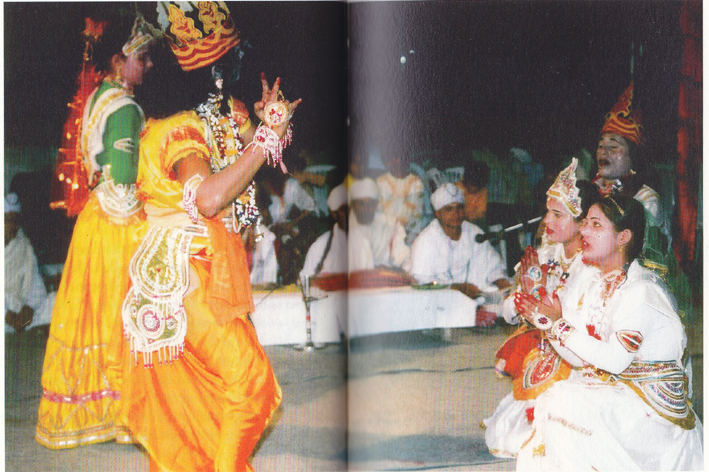
The three functions of the cosmos, creation, preservation
and destruction, are personified in Brahma, the creator, Vishnu the
preserver, and Shiva the destroyer or transformer. The Bhagawata Purana,
one of India�s
revered ancient texts, explains that the greatest benefit can be had from
Vishnu, called the �All-pervading one� or �one who is present everywhere.
In vaishnavite tradition, Vishnu is the Supreme God, worshipped
either directly or in one of his ten avatars, principally�Rama,
Krishna, Narayana, or Vasudeva. His followers are
called Vaishnava(s) or Vaishnavites while the
word Vaishnavism entered the English language in the nineteenth
century.
The worship of Vishnu in ancient
India is well
documented; it finds mention in the Mahabharata, in an episode later to
become the source of Bhagawad Gita. It flourished during the reign
of Chandragupta II (circa 375-413), and in Shaivite South
India, in 6th to 9th century, through the tireless
efforts of the twelve Alvar saints of Tamil Nadu. The seed of
Vaishnavism sown by the Alvar saints and nurtured by later
saints like Ramanuja (1017-1137) of Tamil Nadu, Basava
(1106-1167) of Karnataka and Namdeva (1270-1350) of
Maharashtra
is now in fruition.
As if by divine providence, from across India, a number of
religious leaders of great endowment appear on the horizon, bearing the
message of bhakti to the people: Ramananda of Allahabad
, Kabir from Varanasi, Sankaradeva in Assam
, Nanak in Lahore , Vallabhacharya of the Telegu
community in the South , Chaitanya of Bengal ,
Mira Bai from Rajsthan and Tulsidas from
Rajapur in Uttar Pradesh.
It is a period of tolerance among the diverse faiths.
Chistiyya Sufi saints of
Ajmer in Rajasthan invoke ideas from the Hindu bhakti
movement in their devotional songs. The Sikh holy book puts in its pages
thoughts from Hindu and Muslim saints: sixty one of Namdeva�s
hymns, one of Ramananda�s poems, and more than five hundred verses
of Kabir, one of the 99 names of God in the Islamic faith, find
place in the Guru Granth Sahib. This resurgence in the
universal and liberal doctrine of bhakti ushers in an era of
profound reformation in the socio-religious milieu across the country.
In such times, Sankara is born.
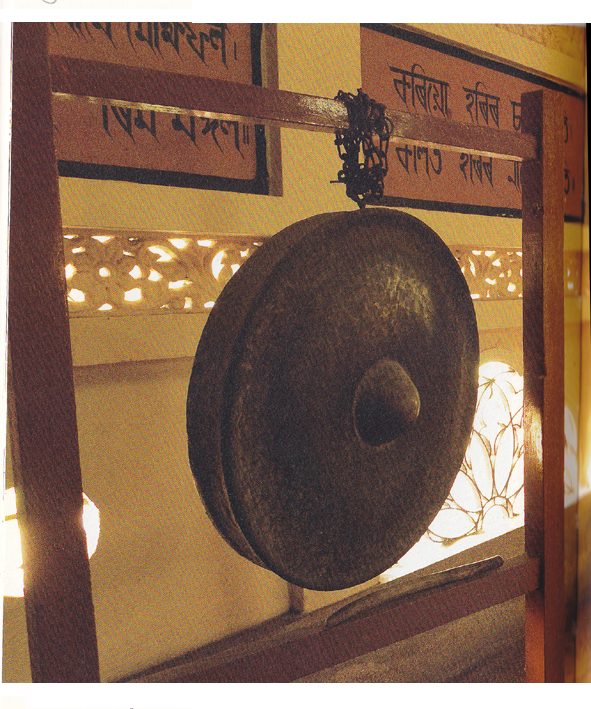
Aimless wanderer
Sankara losses his father at
the age of seven, his mother shortly thereafter, and is raised by his
grandmother, Khersuti. Indulgent towards her foundling, she lets
him wander freely for the first twelve years of his life. A happy,
carefree child, he spends his time grazing cattle and roaming the fields.
He goes hunting birds, deer, tortoises and porpoises, only to release them
unharmed, and often swims the mighty Brahmaputra across and back
unaided. He also indulges in the usual games played by village children,
such as ghila, kotora, bhatta and dugdugali.
This aimless wanderer would one day:
Found a religious order that would bring about a social
reform and over five centuries, become a way of life for his people.
Establish institutions that would become focuses of
Assamese art and culture.
Write with equal dexterity in three languages to leave
behind a treasure trove of literature, more than many religious poets of
the world have done.
Translate scriptures and epics from Sanskrit into idiomatic
Assamese to bring them within reach of the common people.
Compose soulful lyrics, set them to music in classical
pan-Indian ragas and sing them.
Create dramas, design costumes and musical instruments,
stage plays and also anchor them.
Evolve a dance form that would survive five centuries to
become one of
India�s
eight classical dance traditions, the only one that can be traced back
directly to an individual.
While doing so, he would find not only the ways but also
the means. One can only say that things come naturally to a
Mahapurusha (Great Man) as Sankara, soon to be adorned with the
epithet �deva�, would be known.
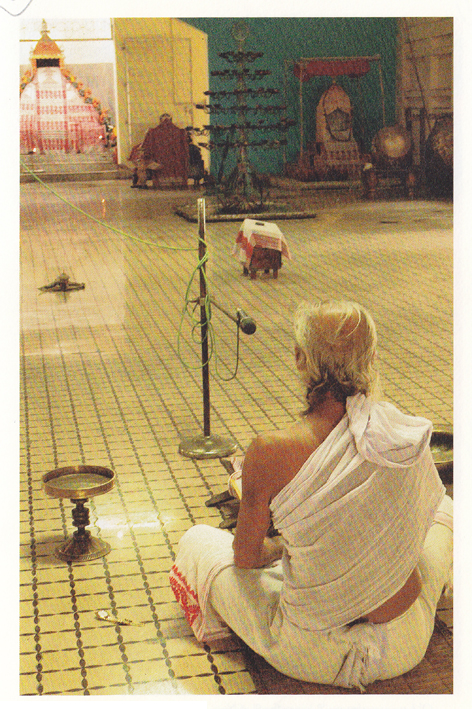
Days at School
Sankara�s
idyllic existence ended when his grandmother decided that playtime was
over and formal learning must begin. He would attend a tol or
chhatrasala, a pan-Indian educational institution, run by Brahman
scholars. Tols had small cottages for students hailing from afar.
The pupils also had to clean and sweep the school premises and keep them
in order.
The curriculum of a tol consisted mainly of Sanskrit
grammar, lexicon, the epics, the puranas and other religious works.
Accurate copying of original religious texts and reading them to scholars
or holy men were considered qualifications in themselves. Scholars from
outside visited such institutions and held discourses. After completing
education in a local tol, many proceeded for further studies to places
like Varanasi,
Mithila and
Nadia.
One�s learning was put to further rest in an open assembly
of pandits, sometimes in the presence of royals. Scholars partook
in verbal duels in such assemblies to display their learning or to settle
contentious issues. A win, especially in a royal court, earned the
victor great accolade, as with Chandivara, Sankara�s ancestor. In
years to come, Sankara�s debating skill would come to his aid on
many occasions.
On an auspicious day, the twelve-year-old Sankara
set foot in the tol of Mahendra Kandali, a Brahman pandit.
The boy took time to adjust to the cloistered regime but soon became a
devoted student. About Sankara�s courses of study, one account
gives an exhaustive list of subjects and works covering all branches of
Indian learning---the Vedas, the Upanishads, the Ramayana, the
Mahabharata, the puranas, the sambitas, the tantras,
grammar, lexicon and the kavyas. Another mentions only chapter on
grammar, adding that Sankara studies all books without exception
and became an unerring scholar.
Evidence of this is borne out by Sankara composing
his first poem soon after joining school. An ode to Lord Vishnu, it
uses only the consonants and Vowel �a� � whatever Sankara had been
taught thus far.
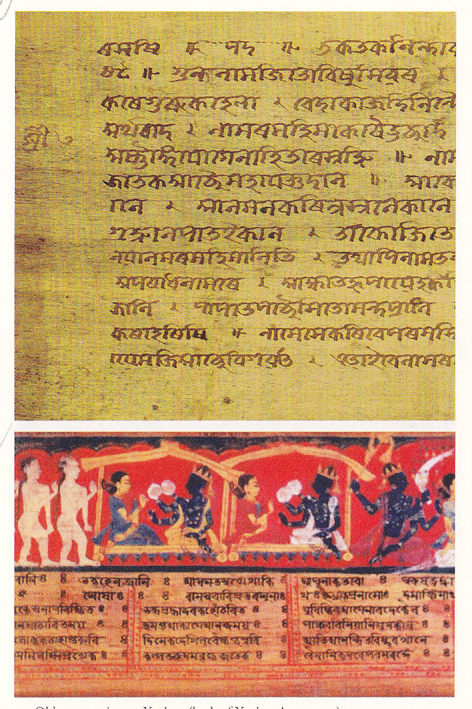
The eight-line poem begins with hands lifted to the
heavens,
�karatala kamala
kamaladala nayana,
bhavadava dahana
Ghana vana saiyana.
(�Thy palm is like the lotus, Thine eyes like lotus
petals, Thou art the consumer of worldly afflictions, Thou art the sleeper
in deep forest.�)
And ends with a note of submission:
jagadaha mapahara
bhavabhoya tarana,
parapada layakara
kamalaja nayana.
(�Thou art the saviour from the earthly grief; Thou
art the giver of final beatitude; O Lotus-eyed Lord! I worship thee.�)
Vibrant with unmistakable stirrings of the sentiment of
bhakti, or devotion, the poem is a portent of things to come. Its
lyrical beauty and sobriety of thought, coming from one so young,
astounded Mahendra Kandali. The teacher had another surprise
coming.
One day, Kandali found Sankara asleep in the
school grounds, the extended hood of a cobra protecting his head from the
burning rays of the sun. With this epiphany, the guru saw his young
pupil�s future greatness. He conferred on him the epithet �deva�,
usually applicable to Brahmans, and asked other pupils to address him as
Sankaradeva, not Sankara. Kandali also exempted him from the
ordinary student�s duty of cleaning the school precincts.
By the age of twenty, Sankara had completed all
course of study assigned to him by his teacher. He had come to Yoga at
about fifteen years of age and practiced it with great diligence, becoming
immersed in matters of spiritual subtlety. It is said that when Sankara
left school, everyone, above all his teacher Mahendra Kandali,
recognized his immense learning and saw in it his future greatness.
Sankaradeva,
true to his nature, would first pay his dues to his ancestors.
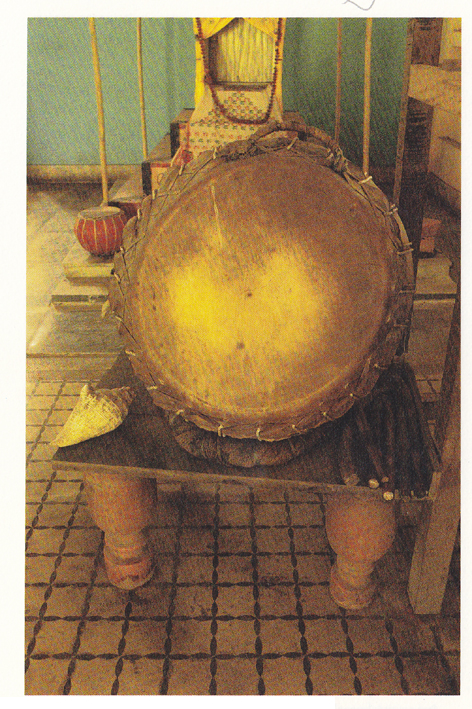
Marriage and
Bereavement
Sankaradeva
assumed the administrative duties of the Siromoni Bhuya.
These had been temporarily assigned, after his father�s death, to the care
of Jayanta-dalai and Madhava-dalai, his father�s paternal
uncles. He began looking after the welfare of his people, mainly farmers
and tradesmen.He had to contend with the frequent territorial disputes
with the Kacharis who owned farmland contiguous to the Bhuyas.
Skirmishes would often occur, keeping the neighbours in a state of
constant agitation. The Bhuyas, by then, had become militarily weak
while the Kacharis had grown stronger. Sankaradeva used
resources at hand to resolve conflicts amicably before they came to a
head, and generally succeeded.
Sankaradeva
was twenty-one and his people suggested marriage for him. He married
Suryavati, the fourteen-year-old daughter of Harivaragiri, a
wealthy Bhuya. After few years of marriage, Suryavati gave
birth to a daughter, named Manu or Haripriya. Tragedy struck a year
later; Sankaradeva, who had been orphaned at a tender age, now lost
his wife. At twenty-four years of age, his mind was distracted once more
by personal bereavement.His life now took a turn, in a manner first
evident during his aimless wanderings.
The world around Sankaradeva, late 15th
century Assam,
was in a state of flux. There was constant fighting among the
heterogeneous entities, jostling for power and territory. From the west
came successive invasion from other expansionist forces. Hemmed in between
several kingdoms, the Bhuyas were plagued by wars not of their
making, made worse by their lack of military strength. Sankaradeva
was a witness, as a result, to great many wars during his lifetime.
The Ahoms would fight five wars with the Kacharis,
ten with the various Naga tribes, seven with the Chutiyas,
and engage in numerous conflicts with other minor entities. One Ahom king�Suhungmung�would
be murdered by his power�hungry son. The Mohammedans would invade three
times, once destroying the pre-historic temple at Kamakhya. Growing
ambitious, the Koch King would wage wars with the Kacharis, the
Manipuri Raja, Jaintia, Tippera and Sylhet kings, and the
Badshah of Gaur, besides attacking the Ahoms five times.They are
battles for greater glory, never greater good; involving the wagering of
lands and the wasting of lives.
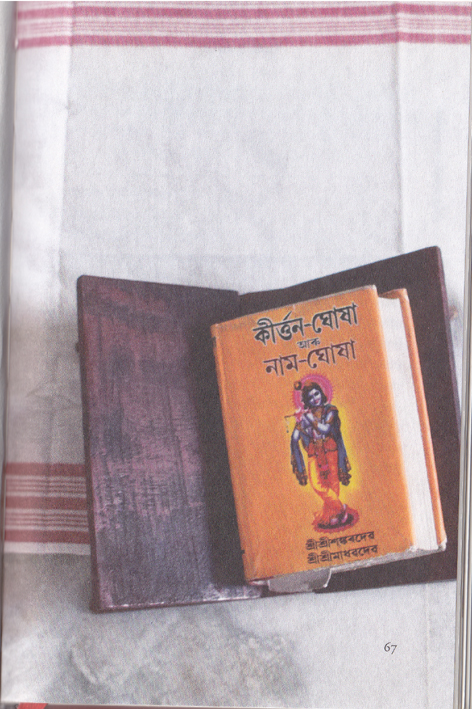
.
When it came to religion, the intrigues were no less
bitter, the means no more redeeming. Sankaradeva, who would one-day
bar idolatry from his religion, had himself grown up in a practicing
Sakta environment. His great-great-grandfather Chandivara, a
devout Sakta, bore the epithet �Devidasa� (servant of the
Goddess). His father, Kusumavara, kept and image of the goddess
Chandi in the house for worship. Sankaradeva was born after his
father had offered prayers to Lord Shiva, and had been named, at birth,
Sankara-vara (gift of Sankara, another name for Lord Shiva).In the hands of unscrupulous practitioners, however, Saktism had by
then degenerated into a debased form of faith.
Gait describes
Assam at this time: �Saktism
was the predominant form of Hinduism. Its adherents based their
observances on the Tantras, a series of religious works in which
the various ceremonies, prayers and incantations are prescribed, a
religion of bloody sacrifices from which even human beings were not
exempt.� Self-serving priests encouraged ritualistic worship of gods and
goddess, and prescribed votive sacrifice of animals. This disturbed the
young Sankaradeva, his intellectual awareness kindled by formal
education under Mahendra Kandali. Sankaradeva saw around him a
singular lack of tolerance, goodwill, and fellow-feeling. There was
nothing beyond greed and selfish ego. Above all, there was lack of
Bhakti as propounded in the Vedas and the Puranas.
When Sankaradeva�s teacher felt he had no more to
offer, Sankaradeva had left school. Burdened with the duties of an
administrator and a householder, he had continued his scholarly pursuits
on his own. He immersed himself in the scriptures, held religious
discussions among his people and engaged in discourses with visiting
scholars. Even as a young cowherd, seemingly aimless in his wanderings, he
had an astute sensitivity to his surroundings. Once free of the routine of
school, he brought that sensitivity to bear on his independent study.
The neo-Vaishnava movement, unfolding across
India, acted as a spark
to this spirit. The understanding and commitment of the young
Sankaradeva, working alone in a small village away from all centres of
mainstream security, was of a piece with the movement. The outline of his
work secure in his mind, Sankaradeva was now ready for a journey
out, to meet and engage with other like-minded scholars.
Worldly obligations would delay his departure.
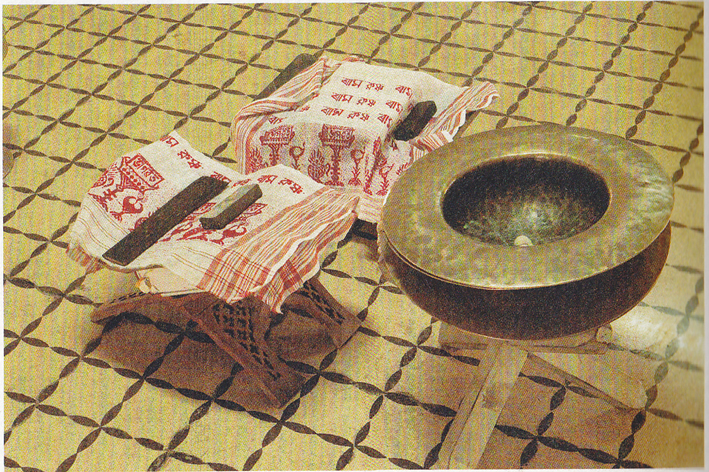
First Pilgrimage
Sankaradeva
waited a few years. When his daughter turned nine, in keeping with the
temper of the times, he gave her in marriage to a Kayastha youth
named Hari. He entrusted the household duties to his son-in-law,
and administration, as before, to Jayanta-dalai and Madhava-dalai.
In 1481, the 32 year-old Sankaradeva set out on his first
pilgrimage. He was accompanied by seventeen others, including Mahendra
Kandali, his teacher. The pilgrimage would last twelve long years, a
fair indication of Sankaradeva�s belief in the need for rigorous
inquiry and debate in the making of a robust faith.
Sankaradeva
visited the key centres of religious importance in various parts of the
country, especially those connected with the lives of Rama and
Krishna. Puri with the 12th century
temple of Lord
Jagannath was of special interest to him, and he stayed there the
longest. Puri was the confluence where religious scholars gathered
to exchange ideas, propound new thoughts and engage in debates.
Sankaradeva�s personal surrender to the concepts of sadhana and
bhakti�spiritual practice and devotion-resonated with the neo-Vaishnava
movement. Holding discourses with scholars from around the country, all
proponents of the gospel of bhakti, Sankaradeva refined his own
faith.
Sankaradeva
found bhakti pouring out in devotional songs, as he heard men of
faith sing the songs of poets in Puri and
Varanasi. He was witness to the power of community singing.
At Badarikasrama, one of the scared sources of the Ganges,
Sankaradeva was moved to compose his first devotional song. Written in
Assamese Brajabuli, a linguistic construct comprising Assamese and
Maithili, the hymn begins with the words �mana meri rama
charanhi lagu� (rest, my mind, rest on the feet of Rama) and is
set to raga Dhaneshri.
Brajabuli
made popular by the 14th century poet Vidypati, was
used by poets in Northern India particularly to narrate songs on the theme
of Radha Krishna. Rabindranath Tagore would write his
�Bhansingha Thakurer Padavali� in Brajabuli in 1884. In
composing his hymn in Brajabuli and setting the tune to a raga,
Sankaradeva�s approach was pan-Indian.
Sankaradeva
returns home with a faith robust and secure.
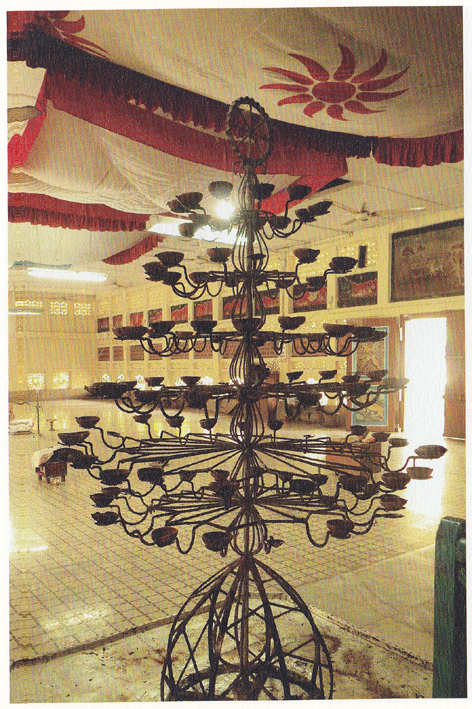
Return Home
Sankaradeva�s
outlook on life was now much broader, and his religious beliefs
encompassed a wider horizon. He felt ready to propagate his liberal faith
of Bhakti among the people. However, his kinfolk insisted on his
marrying a second time and resuming the duties of the Siromoni Bhuya.
He yielded to the first and at the age of forty-eight, took as his second
wife Kandali, daughter of Kalika Bhuya. He declined the
administrative duties, declaring his intention to lead a life of devotion
and prayer instead.
Sankaradeva
had a simple temple of thatched roof built for little away from the
householders, and immersed himself in the study of scriptures and in
religious discussions. Termed Hari griha or deva griha,
meaning house of the Lord, this would be the precursor to the naam ghar,
or prayer hall, as we know today.
Once settled in Bardowa, he was urged by the local
community to organize some kind of festivity as he must have seen during
his travels. So, one Poornima (full-moon night), in the month of
Phal guna (February-March), he organized at Bardowa a
Doljatra, a festival of colour. Known variously as Dol Poornima,
Dol Utsav, or Holi, it is observed with much gaiety,
particularly in
Northern India,
and is said to mark the day Lord Krishna professed his love for his
consort Radha. The festival was a great success. Doljatra
today is an annual event celebrated with great fanfare, especially in
Barpeta xatra; the one held in Majuli draws visitors from
around the world. Some accounts, however, place Sankaradeva�s
celebration of Doljatra at Bardowa at a date before his
first pilgrimage.
Sankaradeva
next staged at Bardowa �chihna yatra�, a�dramatic presentation with
paintings� using seven hand-painted scenes in succession, each depicting
one of the seven Vaikunthas, celestial abodes of God, as the
backdrop. This dramatic exercise was written, produced, and staged by
Sankaradeva with music, illuminations and fireworks. Sankaradeva
also played the main part of Sutradhar, the anchor. For the
occasion, he had musical instruments such as drum and cymbals specially
made to his design.
It was a tremendous success. His old teacher Mahendra
Kandali was overwhelmed by his pupil�s achievement. He turned away
when the latter came to pay him his respects, saying Sankaradeva
was now his guru. It clearly was the beginning of what would later become
the Ankiya Nat. Chihna yatra� is said to be the first modern drama
in the Indo-Aryan languages staged anywhere in the world, but this claim
cannot be substantiated as the next of the play has not been found. Again,
some accounts place Sankaradeva�s enactment of �chihna yatra�
at a time when he was nineteen years of age, long before his first
pilgrimage. Interestingly, it would by another eighty years before the
first �Early Modern English Drama� is staged in
London
in 1576.
Sensing the positive impact of audio and audio-visual
elements upon the masses, Sankaradeva set about exploiting it to
the full. A devotional song, a spectacle of high melodrama, a homely verse
for community chanting, a dance portraying the life of the Lord---would
all become vehicles for propagation of his faith.
A� fruit in full flower� was soon to come his way.
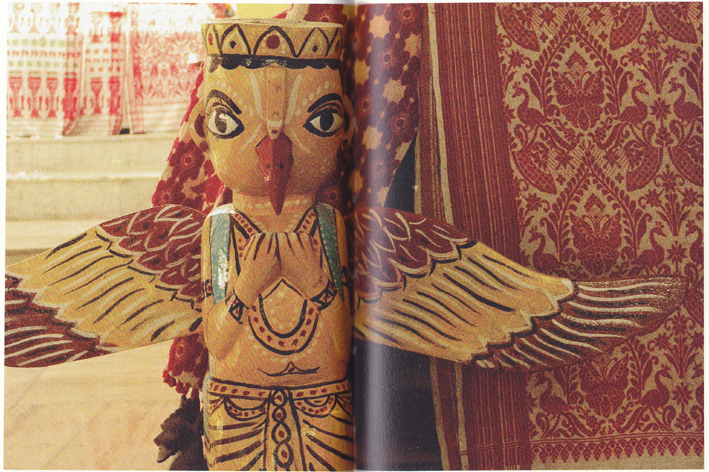
�Fruit in Full Flower�
Among the eighteen puranas, traditionally believed
to have been written by the ancient sage Vyasa, Bhagawata Purana is
the most celebrated and revered. I am said that one can attain salvation
by worshipping, listening to, and reading or even by looking at his sacred
book. Sridhara Swami, an Advaita (non-dualist) scholar,
describes this purana as �delicious fruit falling to earth through the
mouth of suka�, the narrator-son of Vyasa. As per accounts,
sometime after the first pilgrimage, one Jagadisa Misra arrived
from Puri bearing this �fruit� for Sankaradeva, complete with
commentary by Sridhara Swami. Jagadisa recited and explained
the whole work to Sankaradeva, which reportedly took, about a year.
Sankaradeva
was now convinced that this work was without peer. To him, the
Bhagawata Purana�s privileging of
Krishna as the sole worshipful, the imperative of taking
single-minded refuge in him, and the celebrating of his acts in the
company of holymen were sacrosanct. Sankaradeva proceeded to
immerse himself in the purana, setting himself the task of
propounding and propagating the cult of bhakti. Driven by an astute
awareness of universalizing power of hymns, he first composed verses and
hymns in simple Assamese. When his verses found ready an enthusiastic
acceptance from the masses, he extended his range of literary activity.
Sankaradeva�s engagement with the Bhagawata Purana,
complete with commentary by Sridhara Swami, proved to be a
galvanizing moment in his life.
Social reform was Sankaradeva�s main agenda; his
religion, a means for his people to climb out of the abyss they found
themselves in. He knew the faith needed to be liberal, practical,
universal, and accessible. Above all, it had to appeal to the audience it
was aimed at. Mere issuing of doctrinal messages was not enough; one had
to create the ways and means to carry it to the people. For it to be
successful, it needed to be administered with kindness, aberrations dealt
with firmly.
The oneness of the Ultimate Sprit had been the governing
ideal of most branches of Hinduism. Sankaradeva�s faith was no
exception; it was based on-
Eka deva eka seva
Eka bine nahi kewa
One God, one devotion,
There is none but One.
He called it eka sarana nama dharma, that is, the
religion of supreme devotional surrender to the One, the One being Krishna
or one of his incarnations.Out of the nine modes of bhakti,
enumerated in Bhagawata Purana, Sankaradeva chose two: sravana,
the act of listening to accounts of Vishnu, and kirtana, the act of
chanting prayers to the Lord. Simple singing of and listening to tales
of Vishnu or Krishna, and taking refuge in Him without any desire or
motive, were enough. �God is accessible neither through penance and
renunciation, nor through gifts. He is not accessible through yoga or
knowledge; He is tied down to bhakti alone.�
Sankaradeva�s
religion was democratic in nature, open to all, irrespective of caste or
creed. He declared that �to obtain final release or come to the presence
of God, one need neither be a Brahman, nor a sage, nor should one know all
the scriptures.� He embraced into his fold people of all denominations:
the Mikirs, the Misings, the Garos, the Bhutiyas and
the Bodos as well as a Kayastha, a Kachari, a
Chutiya, a Kaivartya, an Ahom, a Brahman, koch, a
Chandal (scavenger), and also people of other faith like
Chandsai, a Muslim, who reportedly became a much respected devotee and
rose in the ranks. To Sankaradeva, asceticism was not essential
for leading a spiritual life.
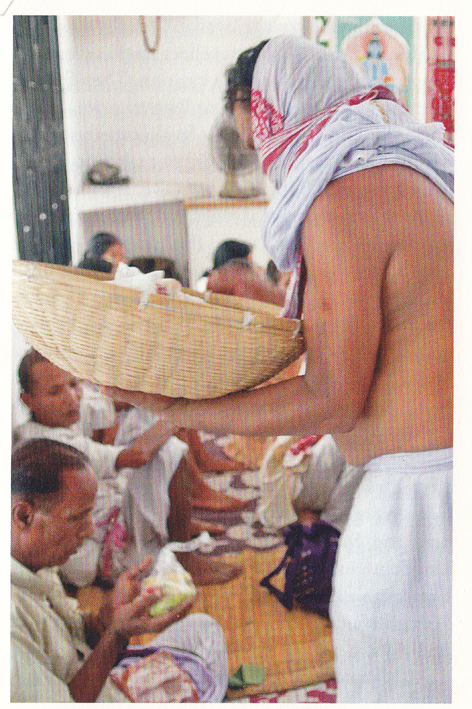
Sankaradeva
forbade the worship of other gods and goddesses in no uncertain terms.
�You will worship only Vasudeva and no other god. All worship is to
be found in the worship of
Krishna; God will not accept any other. Do not become His enemy by
violating religious rules. Do not enter their temples. Look not at their
idols nor eat their Prasad. Bhakti will be vitiated by such
practices.He warned the unbeliever, the frail of faith: �Those who
worship other gods and goddesses are worse sinners than those who kill and
eat dogs. There are no greater sinners than these.�
Seemingly harsh and intolerant, such strict disciplinarian
measures were designed to negate the mindless rituals associated with
idolatry, and to keep the motley flock together. A practical reformer,
Sankaradeva had his feet firmly on the ground; his sure understanding
of human psychology one of his greatest strengths. He once allowed an idol
of Lord Jagannath inside the kirtana ghar, leaving a canny
door ajar for Brahmans to embrace his religion. Five hundred years of
history would prove him right.
Sankaradeva�s
worship was austere, with the Bhagawata (or its concise version the
Gunamala) replacing all idols. Lord Krishna is said to have
invested his complete energy into the Bhagawata Purana, and this
work, therefore, was the perceptible image of Hari in worded form.
In place of an idol, the Bhagawata or its renderings were to be
reverentially treated as the Lord. Sankaradeva initiated his
disciples into his faith with the Bhagawata representing the Lord,
in whom the initiate�s soul would find refuge. In a similar manner, the
Sikhs worship the Adi Granth complied in 1604 by fifth Guru
Arjun Das; and the Terapanthi Jains Worship Scriptures, not
idols.
Sankaradeva�s
new discipline of faith in a single Divinity offered something simple and
straightforward, divested of all questionable associations or
implications. He defined the nature of the relationship between Vishnu or
Krishna and the devotee as one between the Lord and his servant.
It was the path of a man�s direct faith in his Master, without his
assuming the nature of a woman as in the Vaishnavism of Bengal.
Sankaradeva, ever mindful of the erotic overtones of Krishna-gopi
episodes, would not allow any form of eroticism in his faith, not even as
an allegory of divine love.
Sankaradeva�s eka
sarana nama dharma
is also called Mahapurushiya dharma. Both Sankaradeva and
his chief disciple Madhavadeva are considered to be Mahapurushas,
great beings further elevated by virtue of their faith in God, not by
birth.
Bolstered by the success of �chihna yatra�,
Sankaradeva declared himself a preacher and made his first
conversions. Jayanta-dalai�s wife is said to be the first convert,
followed by a leper, Harirama, later called Tulsirama. His
teacher Mahendra Kandali and friend Ramarama, also belonged
to his first batch of converts. Sankaradeva began traveling far
and wide to propagate his faith. He established kirtana ghar or
naam ghar--- a hall for congregational prayer�which became a popular
institution in the religious life of the Assamese people. He translated
religious texts from Sanskrit verse form into homely Assamese, wrote
devotional songs, and created music, drama and dance-forms as means of
reaching out to the people.
Sankaradeva
loved his birthplace. A much-traveled man, he still found his native
Bardowa a place �with no equal of agricultural crops and fish.� Aided
by Sankaradeva�s extraordinary personality and his voice of
thunder, Bardowa became the centre of Vaishnavite
movement and the cultural awakening that accompanied it.
Sadly, he would soon leave Bardowa never to return.
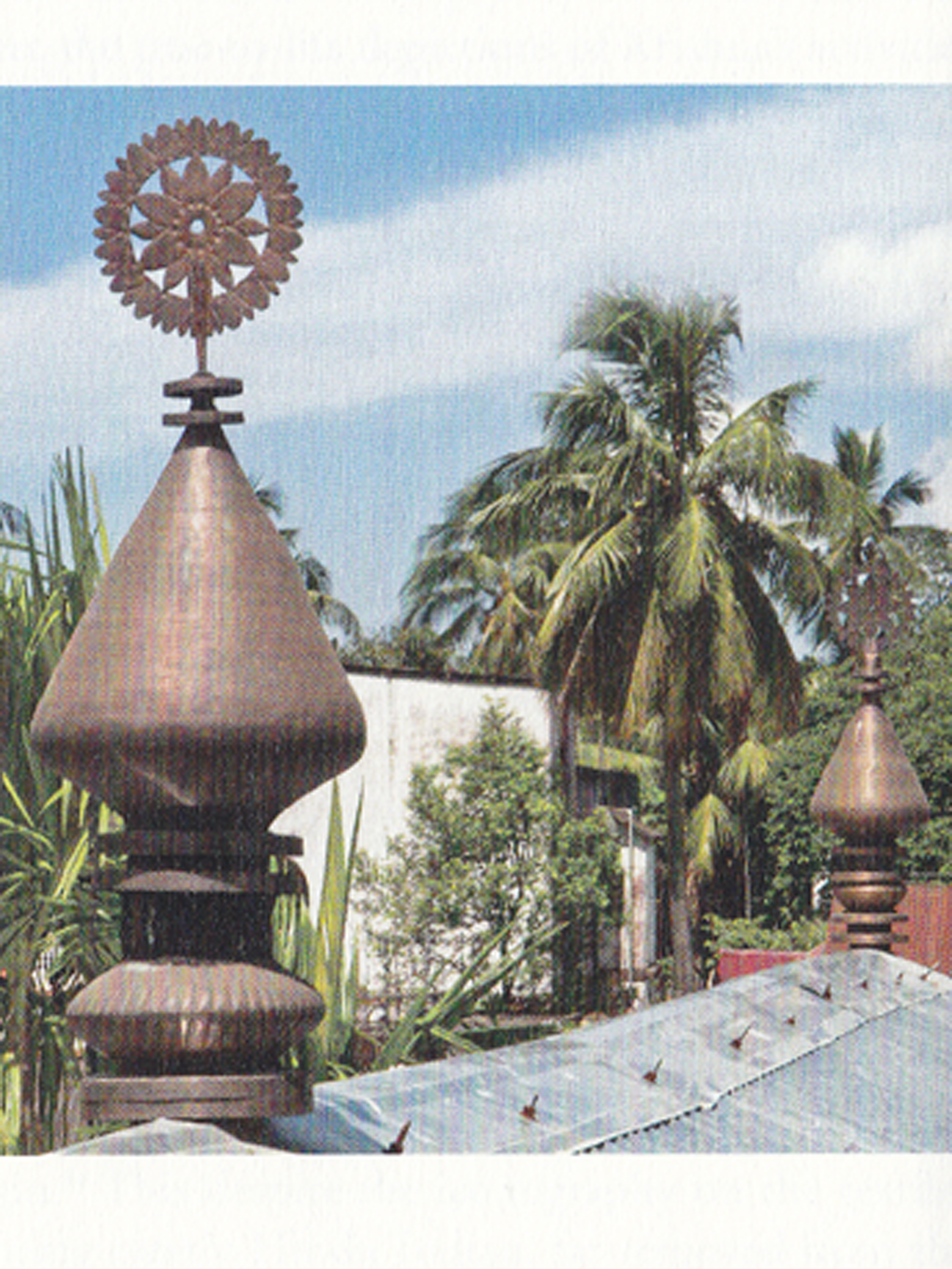
Homeless
After a period of relative stability, trouble started anew
at Bardowa. Matters reached serious proportions when the
Kacharis attacked the Bhuyas. Bhuyas were now too weak to resist;
Sankaradeva advised his people to move north of the river
Brahmaputra. Around 1516, they abandoned their homes, never to return.
Bardowa would remain shrouded in anonymity for the next 150 years.
All Sankaradeva had ever wanted was to share his
faith with a wider audience and this was being denied to him. He was now
ousted from what had been the ancestral home for generations of Bhuyas.
He began his search for a new shelter, for himself and for his people.
They camped at several places on the north bank of the
Brahmaputra,
including Rauta and Gangmau, forced each time to move by one
warring faction or another. The beleaguered group finally reached
Dhuwahat in the island of
Majuli, a part of the Ahom kingdom. Here, they would serve
the Ahom king loyally under the leadership of Hari Bhuya, Sankaradeva�s
son-in-law, and also enjoy a certain degree of autonomy.On the bank of
the little stream Dhuwa, Sankaradeva established what would become
Belaguri xatra. Due to erosion by the
Brahmaputra,
the Majuli Belaguri xatra has been relocated to Narayanapur on the
north bank.
Sankaradeva
and his people had a considerably long stay at Dhuwahat. But their
relationship with the Ahom rulers always remained tenuous, predicated
wholly upon their paying obeisance to Ahom supremacy. Offering harbour to
the Bhuyas did not stop the Ahom from persecuting them,
particularly when under pressure from the priesthood. This apparent
dichotomy in the attitude of the ruling fraternity towards his religion
marked Sankaradeva's lifetime. Time and again he would be summoned
to the royal court to prove the validity of his religion through verbal duels which he invariably won.
Interestingly, the Sikhs would undergo a similar ordeal
with the Mughal rules but with radically different results; the
pacific followers of their founder, Guru Nanak, would turn into the
militant khalsa under the tenth and last Guru, Gobind Singh
(1666-1708).
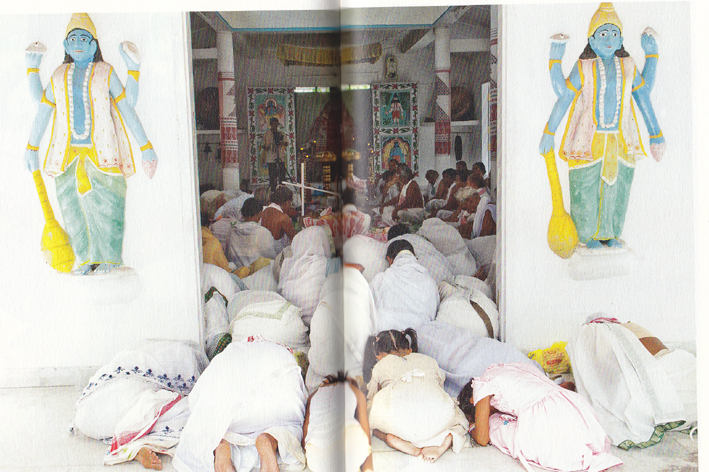
In 1497, Suhungmung had become the first Ahom king
to assume a Hindu name. It signaled the king�s desire to merge with the
mainstream as also greater clout for the priesthood. Despite this,
Sankaradeva�s tireless efforts began to bear fruit. His school of
thought took root; his religion caught the imagination of the people. The
number of his followers grew, and so did the opposition of the clergy.
This dialectic with the priesthood would continue till the very last days
of his life. He was soon sent help under unexpected circumstances.
In 1522, Madhava is a 32-year-old Kayastha
youth, proficient in philosophy, logic, Sanskrit poetry as well as in
accountancy, and also a staunch Sakta. When his mother became ill,
Madhava decided to sacrifice two white goats to the Mother Goddess
as votive offerings. He hurried to the side of his sick mother,
instructing his brother-in-law, Gayapani, to buy the goats.
Madhava was unaware that Gayapani had already embraced
Vaishnavism under Sankaradeva, and taken the name Ramadasa.
Gayapani, a Vaishnava now, did not buy the sacrificial goats.On
learning this and being given the reason for it, a furious Madhava
chose to confront Sankaradeva.
A bitter verbal duel ensued between the two: Sankaradeva,
exponent of Bhakti, and Madhava, quoting from scriptures in
defense of his Sakta beliefs. After four and a half hours,
Sankaradeva turned to the following lines from the Bhagawata Purana:
�As the branches, leaves, and foliage of a tree are
nourished by the pouring of water only at the root of the tree, as the
limbs of the body are nourished by putting food only in the stomach, so
all gods and goddesses are propitiated only by the worship of
Krishna.�
Hearing this, Madhava fell silent; he was now
convinced that Sankaradeva�s was the correct stand. He promptly
fell at Sankaradeva�s feet, accepting him as his Master. From that
moment on, he dedicated his life to the cause of Bhakti and to
Sankaradeva, and remained a bachelor despite being goaded by
Sankaradeva himself to marry. Thus, what began as a routine
confrontation between two scholars--- both well-versed in the scriptures,
each firm in his religious belief�developed into a defining moment in
Assamese Vaishnavism.
Sankaradeva
now had in Madhaba an able associate who was a scholar, a poet, and
a fine singer. The religion of Bhakti flourished and the number of
devotees increased manifold. At the age of 73, Sankaradeva had
found his chief apostle and, as he realized, his religious successor.
Sankaradeva named Madhaba his prana bandhava, his soul
mate.
The growing popularity of Sankaradeva�s religion
would now cause his downfall.
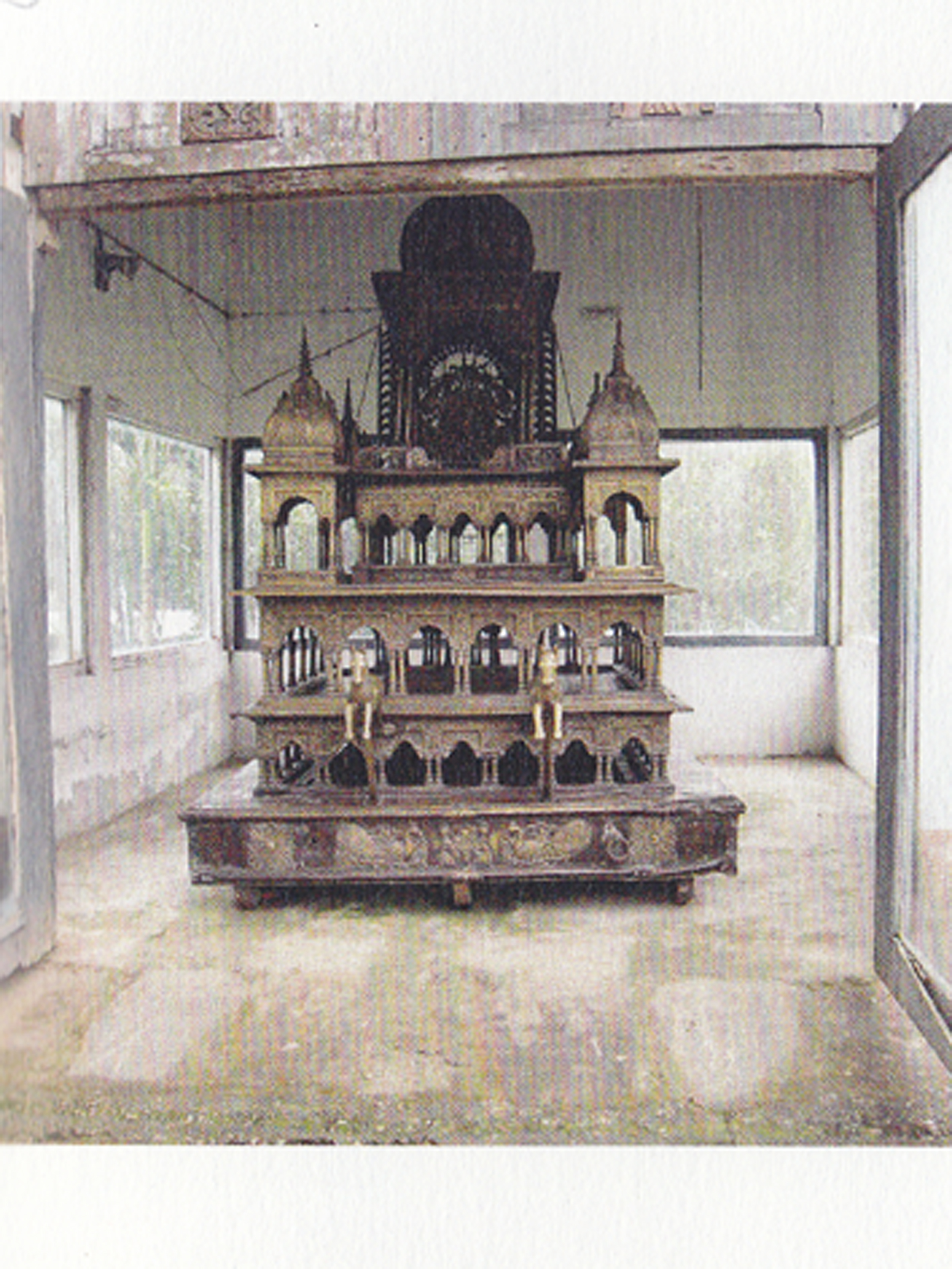
Homeless Once More
Sankaradeva�s
relations with the Ahom had always been under a lot of strain. Things took
a turn for the worse in 1539 when Suklenmung became king after
killing his father, Suhungmung. Matters came to a head during an
elephant-catching operation. The Ahoms accused Hari Bhuya of
non-cooperation and dereliction of duty, arresting him together with
Madhava. After a summary trial, the Ahoms executed Hari Bhuya,
and detained Madhava for several months. Facts came to light only
after Madhava reached home upon his release. The fraught relations
with the Ahoms finally snapped. Sankaradeva realized this was all a
ruse engineered by the Brahmin clergy; the time had come for him and his
people to seek new pastures.
All through his adult years, Sankaradeva and his
people had suffered such humiliations and disturbances to their peace.
These militated against their settling down anywhere for long. Since
leaving Bardowa, he had set up home in no less than seven different
places, driven out each time by divisive forces. He now longed for clement
surroundings in which to propagate his faith.
His wishes were fulfilled when Naranarayana
(1540-1584) ascended the throne of the neighbouring western kingdom of
Koch Behar. Schooled in
Varanasi, Naranarayana was a �man of mild and studious disposition, more addicted to
religious exercise and conversation with learned men than to the conduct
of State affairs. In all questions of politics, Chilarai, his
brother and Commander-in-Chief of the army, seems to have possessed and
overwhelming influence; he was the moving spirit in every adventure.�
The two princely brothers, Naranarayana and Chilarai, soon
gained reputation as lovers of learning.
Two prominent Bhuyas in the west, who had fled the
Koch kingdom during the reign of Bisva Singha, Naranarayana�s
father, now formed an alliance with the new king. They agreed to serve in
his army and help in his attack on the Ahoms. The western Bhuyas
also facilitated a safe passage for their eastern brethren to leave their
tormentors in the Ahom kingdom and migrate to the safer haven of the Koch
kingdom.
And in Chilarai, Sankaradeva would find his most
loyal patron.

Migration to
Koch Kingdom
In 1546, Sankaradeva and his followers set sail for
Koch Behar, taking the river route from Dhuwahat. While
selecting a site for a xatra, other than the practical
consideration of river communicability, the key determinant was the
�availability of grains, vegetables and fish. The travelers made
several attempts at finding a suitable location. They first set up camp at
Palengdi-bari near Barpeta town, before finally settling at Pat-bausi,
a few kilometers away.
At first, Naranarayana did not take too kindly to
Sankardeva. But he was won over after he heard Sankaradeva's devotional songs and saw his scholarly prowess in debates
with the priests. A great patron of learning, Naranarayana�s
religious ambivalence is evident in his allowing Sankardeva to
preach his liberal faith of Bhakti, while also helping rebuild the
Sakta temple at Kamakhya, destroyed by the
Mohammedans.
The brothers, Naranarayana and Chilarai, together took the
kingdom of Koch
Behar to great heights. They defeated the powerful Ahoms and erected a
fort at Narayanpur, the Kacharis were easily overcome and
the kings of Manipur, Jaintia, Tippera and Sylhet meekly
surrendered. The Koch kingdom, in its prime, extended from the river
Karatoya in the west to central Assam in the east. Naranarayana
would, however, be the last king of undivided Koch Behar.
Chilarai
became a staunch supporter of Sankaradeva and developed kinship
with him when he married into the saint�s family. During his pat-bausi
days, Sankaradeva paid regular visits to the court of
Naranarayana. While there, he would stay with Chilarai who had
built a xatra for him at Bheladenga, near the capital of
Koch Behar. This xatra would twice be washed away, before
being established at its present site, known as Madhupur xatra.
Around 1550, soon after settling down at Pat-bausi,
Sankaradeva embarked on his second pilgrimage, accompanied by 120
devotees, including Madhavadeva. They visited Puri, which
always held a special place in Sankaradeva�s heart. Unlike the
first, this pilgrimage turned out to be a short sojourn. It is said that
Sankaradeva�s wife tutored Madhavadeva to decline to
accompany him to Vrindavan, fearing her husband might decide to stay on
and not return home. The plan worked; after six months in Puri, the
pilgrims returned home. Sankaradeva too no doubt aware of the
time left to him in which to carry out his work.
His most creative period was now imminent. For the last
eighteen or twenty years of Sankaradeva�s life, Pat-bausi
was his permanent place of residence. At last, he had come to the serenity
he had sought all his life. His prodigious creative output during this
period speaks of that arrival.
Sankaradeva�s
major poetical and dramatic works were composed at Pat-bausi
between 1546-1568. The last sections of the Kirtana-ghosa were
set down, and the Bhagawata X-Adi was rendered into Assamese
verse, these two being the key texts of Assamese Vaishnavism. All
his dramas, with the exception of Vipra-patni-prasada, were
composed and produced during his stay in Koch Behar. Other works
include the Bhagawata I,II,XI and XII, and some lyrics belonging to
the genres of Bargeet and Bhatima. During this period,
Sankaradeva also wrote the Totaka hymn and complied his
treatise, Bhakti-ratnakara, culled from the Bhagawata-purana,
the Bhagawadgita, and other Vedic texts.
This brings us to Sankaradeva�s legacy, intrinsic to
any study of the man.
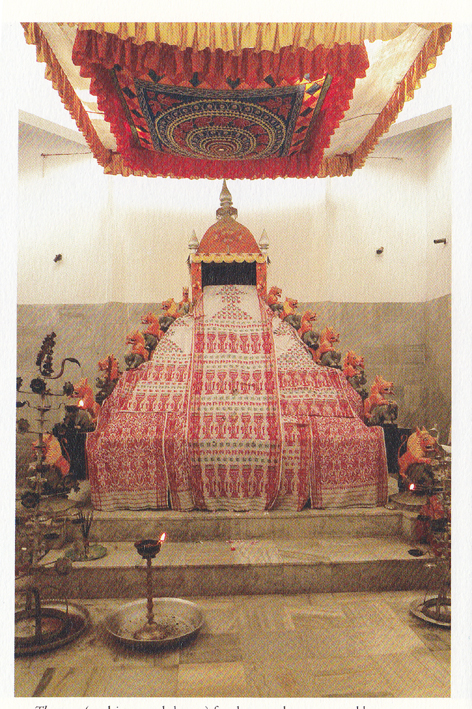
Literary Works
Sankaradeva�s literary
output is prodigious, remarkable for a religious writer. He adopted
several forms of literature: prose, verse and poetical prose, translations
or adaptations, compilations from different texts, songs and lyrics,
longer narratives and a doctrinal treatise. He wrote in three
languages---Assamese, Assamese Brajabuli and Sanskrit. Equally
proficient in all three, he would choose the one most suited for the
purpose and the target audience in mind.
Propagation of his
religion was Sankaradeva�s chief concern. So, he wrote most of his works
in simple Assamese to make them accessible to the common people. His
Bargeets and Ankiya Nats are in Assamese Brajabuli, in
keeping with the pan-Indian tradition. Brajabuli further affords
the use of fanciful language making for heightened drama in the Ankiya
Nats. Sankaradeva wrote Bhakti Ratnakara and the Totaka
hymn in Sanskrit to silence the skeptics who doubted his mastery over the
language.
Vaishnava
poets of the time labored within the framework of spiritual ideals. This
put a curb on their creative freedom. Sankaradeva circumvented the
limitation adroitly: he invoked the sentiment of Bhakti in his
writings and gave a new vigor to Assamese literature. His translations of
Sanskrit scriptures into Assamese are in reality transcriptions, enriched
with a visceral energy his own. His was a new diction; a style and rigour
which provided a model for generations of poets and above all, laid bare
the beauty of plain homely Assamese. Assamese literature is fortunate to
be so enriched by the writings of a man without any literature ambitions,
his only object as a writer being to bring his faith to the people. The
enduring body of work he left behind makes him, nearly 500 years after his
death, as much a man of letters as one of God. His most popular works, the
Kirtana Ghosa and the Bhagawata X-Adi, are mainstays to this
day in every Assamese home.
The Kirtana Ghosa,
or simply Kirtana, is the first of Sankardeva�s work written
specially for the purpose of propagating his faith. It describes �the
divine attributes and activities of Lord Krishna in a language within the
reach of the masses, that they may understand them and sing them in
devotion to the Lord.� While trying to expound his religion, �the
propagandist is not a dry bone preacher but a genius adroit in his appeal,
felicitous in the choice of language and expert in evoking all the poetic
and aesthetic sentiments of devotion.�
Every Kirtana is
meant for more than one voice, and consists of two parts: the Ghosa or
refrain, and a number of Padas or verses.
For example:
�Oh Hari,
I hold on to thy feet and seek refuge;
Oh Gopala,
in the midst of the ocean of worldliness,
Oh Madhava,
I have been submerged,
Recollecting this, I lose sleep.�
�Oh fellow men, save
yourselves from imminent death, Through uttering Rama and Rama.�
The verses carry his
message to his devotes with a simple immediacy:
�It is the essence of
all scriptures that with Hari Nama, one can be saved from this world. Of
the Puranas, the Bhagawata the Agamas, the Vedantas, this is the gist.�
�All the effects
available through pilgrimage to all the scared places, all the sacrifices,
the various acts of charity, observance of vows, and the achievements,
obtained by the Brahmacharis, householders, ascetics and the
Sanyasis all combined together are achieved at the very sight of Lord
Krishna, further description is useless. On the whole, men would achieve
emancipation if they, upon seeing
Krishna, bow down to Him.�
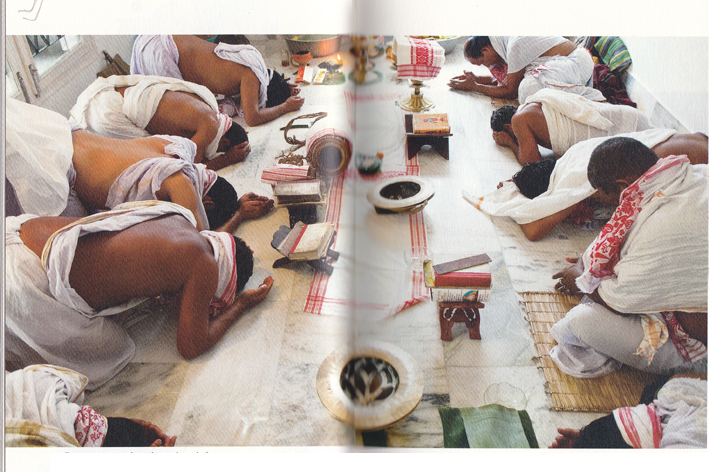
The rendering of the
Bhagawata marks a turn in the development of Assamese poetry. Sankaradeva translated the
Bhagawata not into literary Assamese but into idiomatic Assamese. It
is of an interpretative nature, written in a homely and direct style,
accessible even to the unlettered. After Kirtana, Sankaradeva�s
Bhagawata X-Adi is the most popular Vaishnava scripture by
virtue of its sustained storytelling, rich poetry and fine versification.
Extant literary works
composed by Sankaradeva amount to 26 in number. The Bhagawata IX,
often ascribed to him, has not been found, while the Nimi-Navasiddha
sangbad, part of Bhagawata XI, is sometimes catalogued
separately under kavyas. His complete works are: Kirtana-ghosa,
Gunamala; Bhagawata I,II,III (Anadi Patana), VI (Ajamil
Upakhyan), VIII (Amrita manthan & Bali Chalan), X (Adi), XI & XII; Six
Ankiya Nats, Patni Prasad, Rukmini Haran, Kaliya daman Yatra,
Keli Gopal, Parijat Haran & Sri Ram Vijay; Six Bhakti-Tatva-Kavyas:
Nimi-Navasiddha Sangbad, Bhakti Pradip, Harischandra Upakhyan, Rukmini
haran, Kurukshetra & Ramayan-Uttarakhanda; Bargeets (35 nos), Raj
Bhatima (2 nos), Deva Bhatima including Totaka hymn (3
nos), and the Sanskrit treatise Bhakti Ratnakara.
It is difficult
to fix the chronology of these works as, out of the 26, only one bears the
date of composition within the body of the text. However, Dr. Maheswar
Neog, eminent Vaishnavite scholar, makes an attempt, based on the
tenor of the saint�s compositions. It is said that Sankaradeva�s writing
from the early (Bhuya) period, pre-1516, is characterized by
youthful gaiety and exuberance; the middle (Ahom) period from 1516
to 1546- a period of great unrest and obstruction-is marked by a note of
self-criticism; while the final period in Koach Behar, from 1546 to 1568,
is marked as the most peaceful and also the most creative period in his
life.
